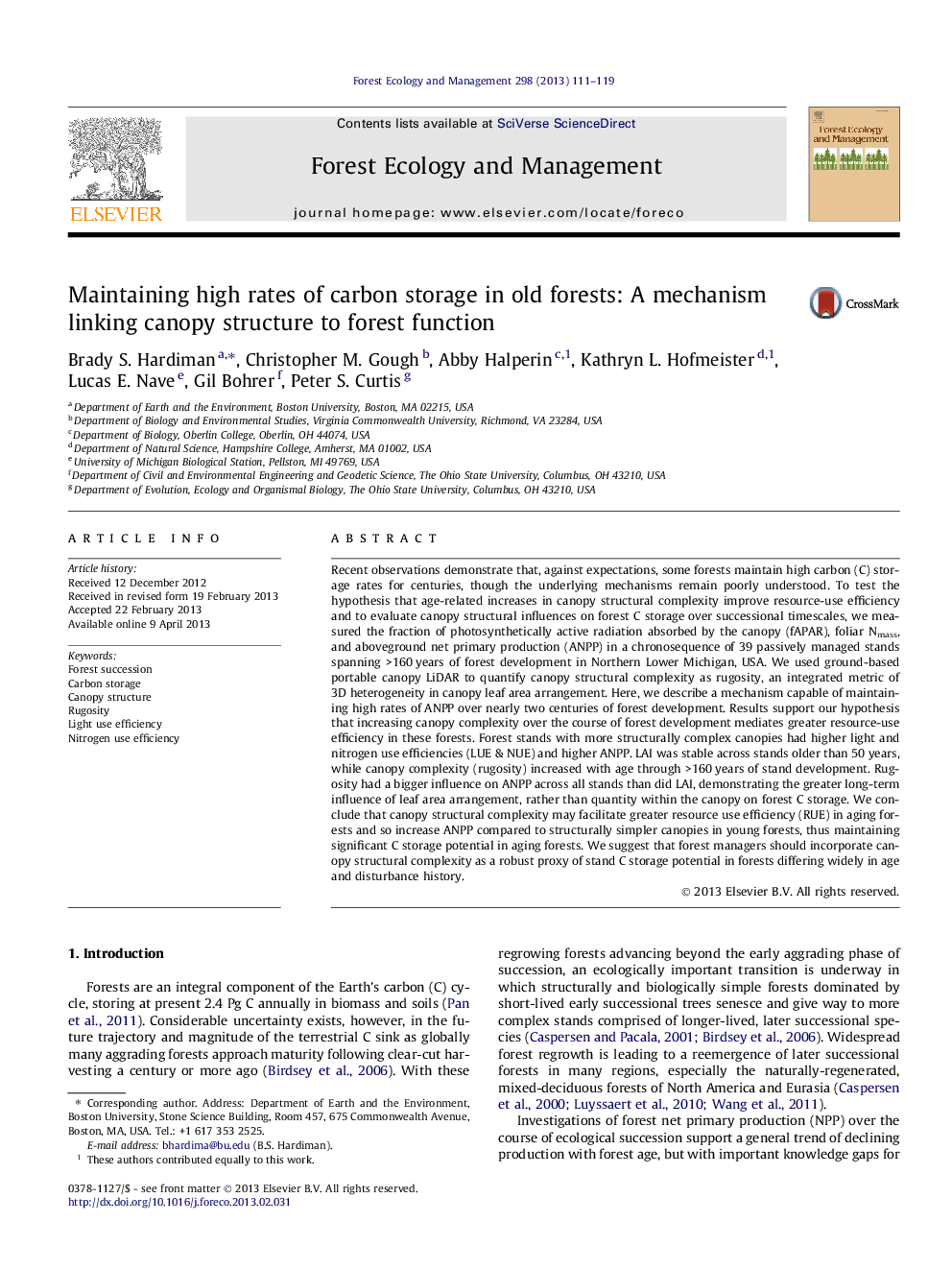| Article ID | Journal | Published Year | Pages | File Type |
|---|---|---|---|---|
| 86843 | Forest Ecology and Management | 2013 | 9 Pages |
Recent observations demonstrate that, against expectations, some forests maintain high carbon (C) storage rates for centuries, though the underlying mechanisms remain poorly understood. To test the hypothesis that age-related increases in canopy structural complexity improve resource-use efficiency and to evaluate canopy structural influences on forest C storage over successional timescales, we measured the fraction of photosynthetically active radiation absorbed by the canopy (fAPAR), foliar Nmass, and aboveground net primary production (ANPP) in a chronosequence of 39 passively managed stands spanning >160 years of forest development in Northern Lower Michigan, USA. We used ground-based portable canopy LiDAR to quantify canopy structural complexity as rugosity, an integrated metric of 3D heterogeneity in canopy leaf area arrangement. Here, we describe a mechanism capable of maintaining high rates of ANPP over nearly two centuries of forest development. Results support our hypothesis that increasing canopy complexity over the course of forest development mediates greater resource-use efficiency in these forests. Forest stands with more structurally complex canopies had higher light and nitrogen use efficiencies (LUE & NUE) and higher ANPP. LAI was stable across stands older than 50 years, while canopy complexity (rugosity) increased with age through >160 years of stand development. Rugosity had a bigger influence on ANPP across all stands than did LAI, demonstrating the greater long-term influence of leaf area arrangement, rather than quantity within the canopy on forest C storage. We conclude that canopy structural complexity may facilitate greater resource use efficiency (RUE) in aging forests and so increase ANPP compared to structurally simpler canopies in young forests, thus maintaining significant C storage potential in aging forests. We suggest that forest managers should incorporate canopy structural complexity as a robust proxy of stand C storage potential in forests differing widely in age and disturbance history.
Graphical abstractFigure optionsDownload full-size imageDownload as PowerPoint slideHighlights► Observed high C storage rates in old forests remain unexplained. ► We examine links between canopy structural complexity (rugosity) and LUE & NUE. ► Canopy structural complexity (rugosity) increased across 166 years of succession. ► LUE & NUE increased with rugosity sustaining ANPP into late succession. ► We provide a mechanistic basis for high C storage rates in old forests.
